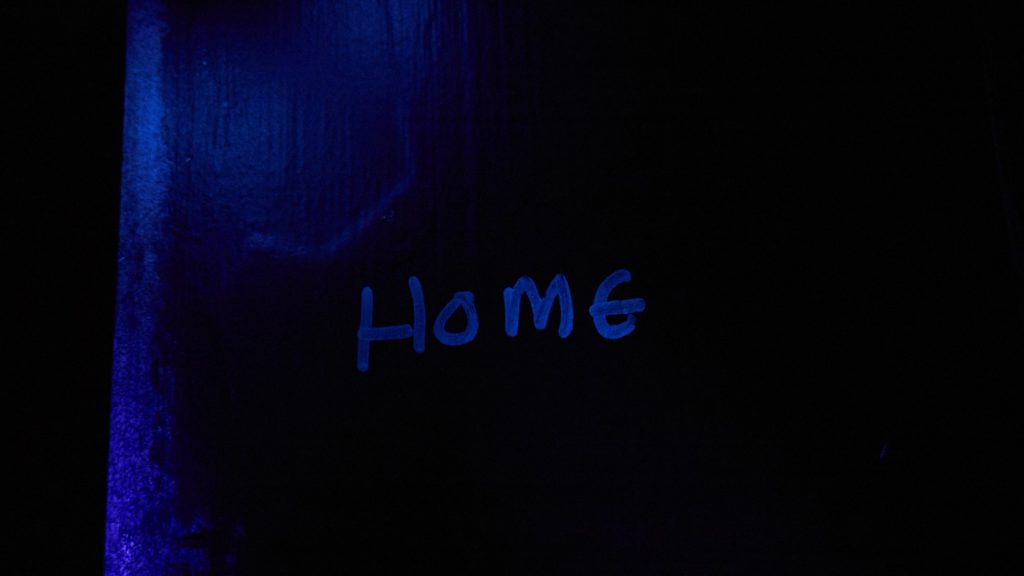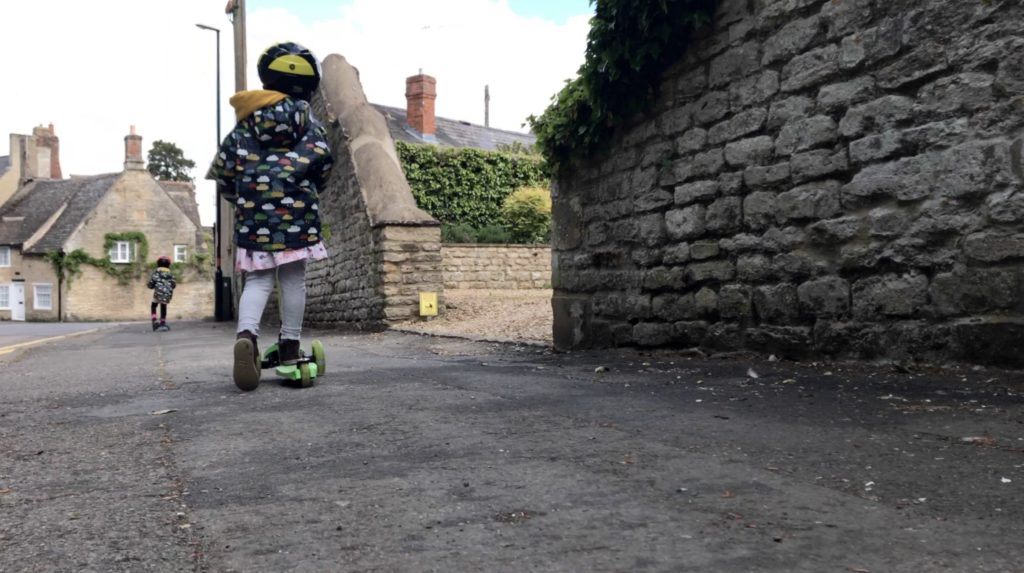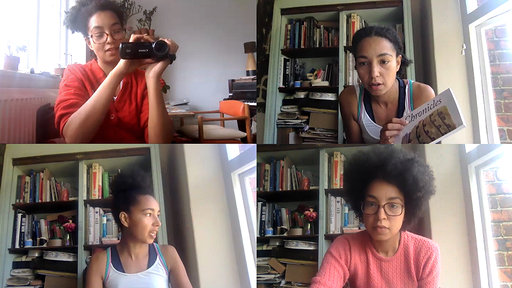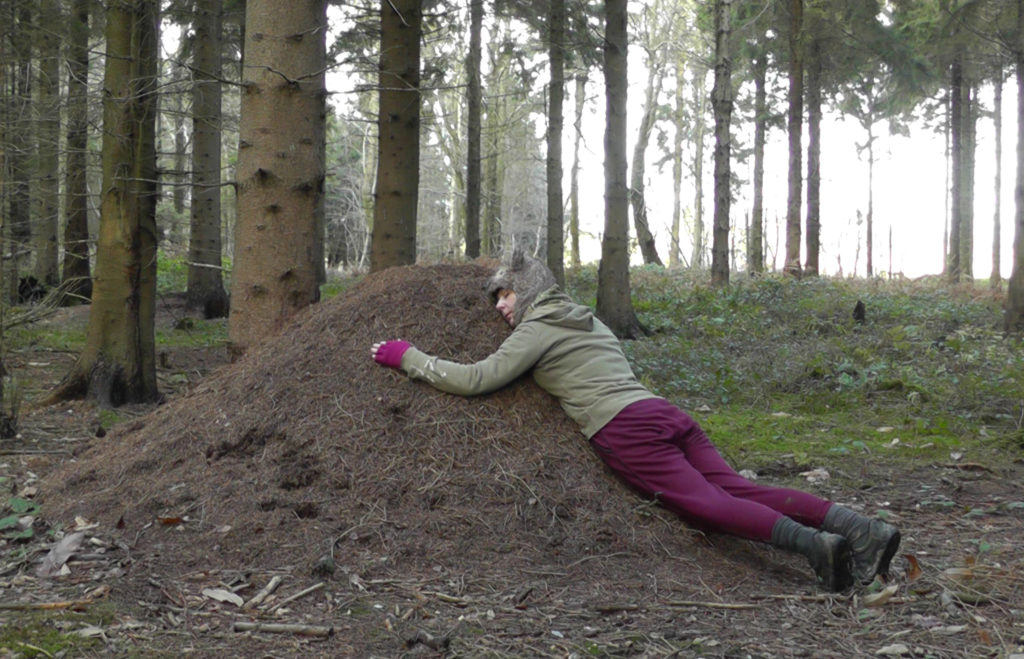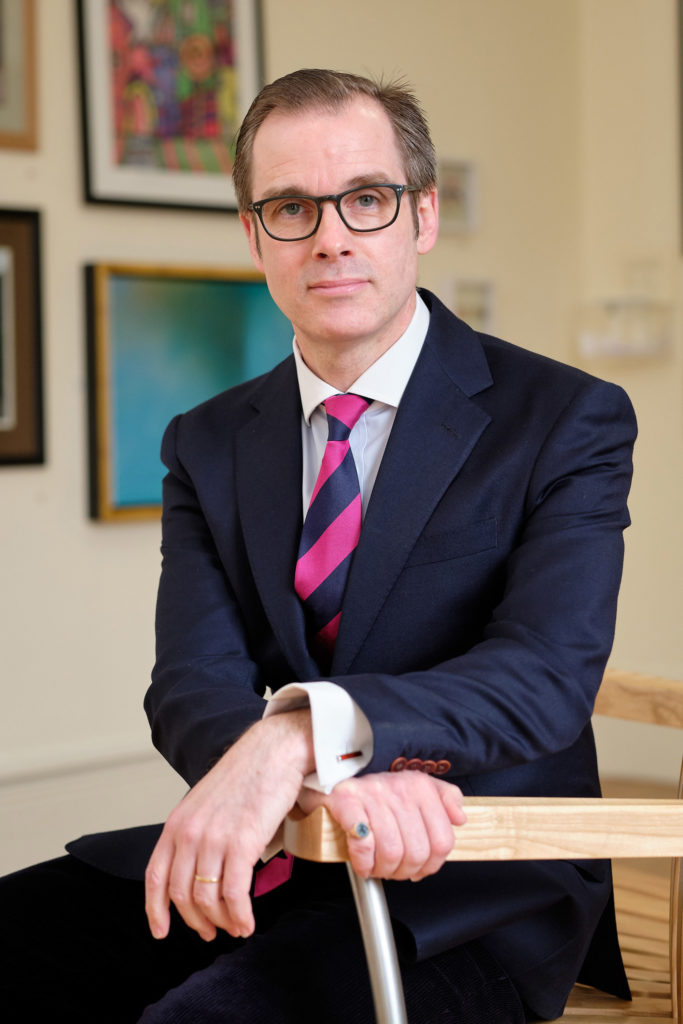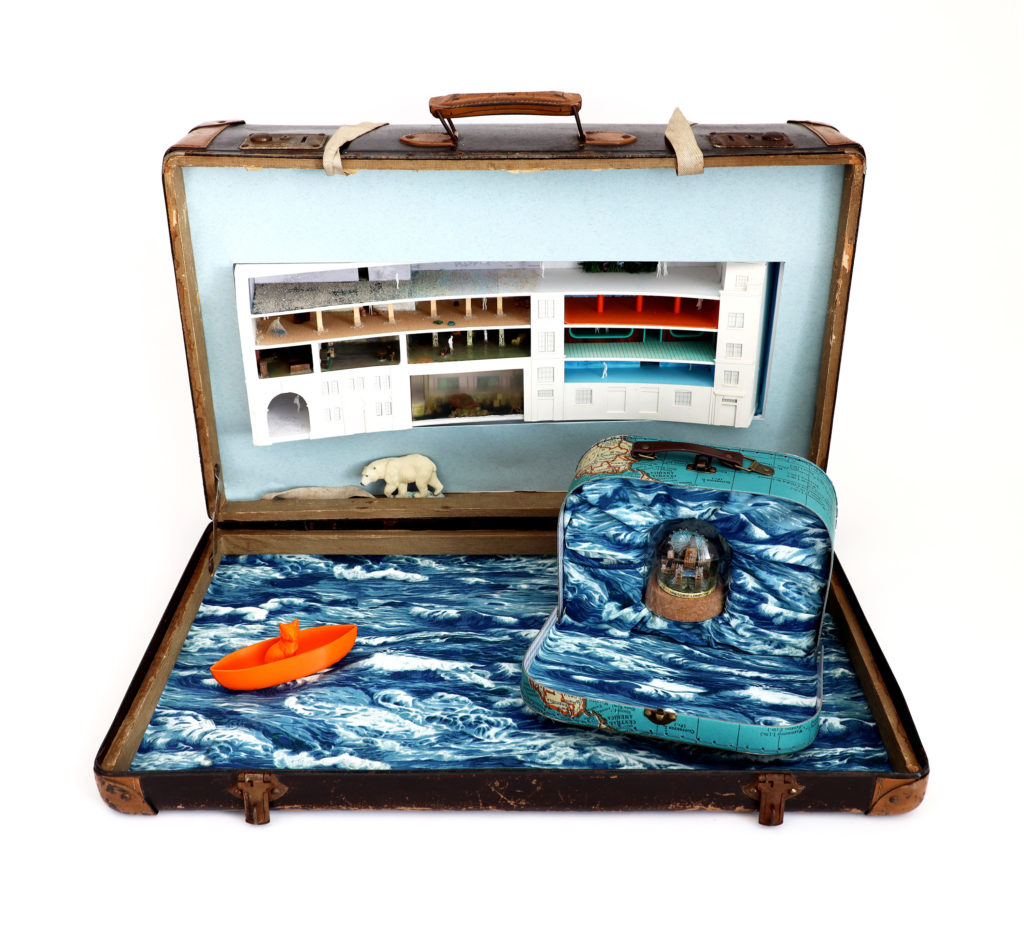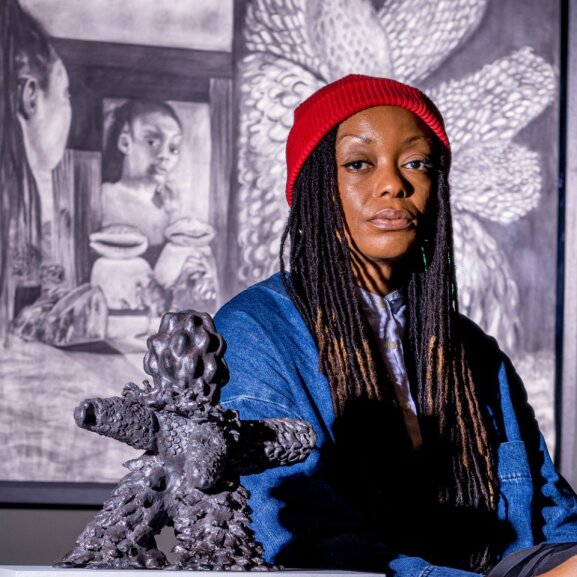
THE British Museum touring exhibition Drawing Attention: Emerging Artists In Dialogue has opened at York Art Gallery as part of a new Season of Drawing.
Compelling up-and-coming names in the field of contemporary drawing are displayed alongside works by celebrated artists within the British Museum collection of prints and drawings.
These new acquisitions include works by some of the youngest living artists ever collected by the British Museum, presented in tandem with works by celebrated artists from Mary Delany and Édouard Manet to Barbara Hepworth, Andy Warhol and Yinka Shonibare.
In this surprising and thought-provoking selection, emerging artists take the medium of drawing in new directions and use innovative approaches. A wide range of techniques and practices are represented, including drawings using make-up on face wipes by Sin Wai Kin and a drawing made with chalk collected from the White Cliffs of Dover by Josephine Baker.
Artists show how drawing, often considered a quiet or private medium, can be used to challenge social norms, explore identity and protest injustice. Catherine Anyango Grünewald has described the time and labour invested in her monumental drawings as a “direct homage” to their subjects, often the victims of institutional crimes.
The painstaking detail of Irish artist Miriam de Búrca’s drawings of clods of earth from cilliní – the unmarked graves of those deemed unfit for Christian burial – forces us to confront an uncomfortable history.
Isabel Seligman, the British Museum’s curator of modern and contemporary drawing, says: “We are excited to share our dynamic and growing collection of contemporary drawings with York Art Gallery, alongside treasures of our historic collection.
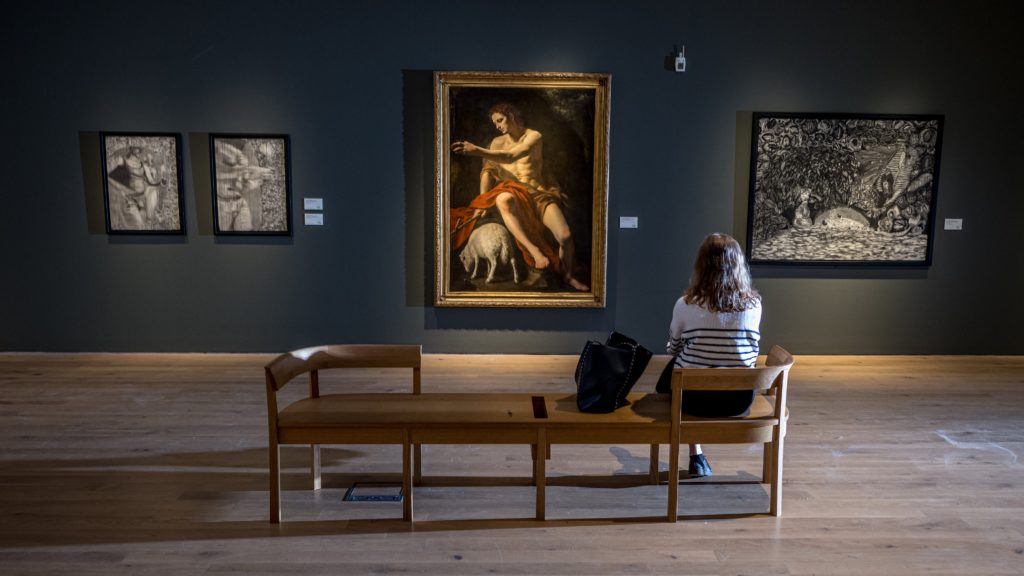
“This touring exhibition enables us to highlight over 20 new acquisitions by some of the freshest and most compelling new voices in the field, exploring questions of identity, memory and materiality, and using innovative materials and processes.”
Drawing Attention: Emerging Artists In Dialogue forms part of a broader Season of Drawing that will run until April 21 2024, taking in the annual Aesthetica Art Prize exhibition from February 15 to April 21.
This season of events and exhibitions includes a new commission by artist Ugonna Hosten, an exhibition of works created by participants in the York Art Gallery’s Teenage Art School and a drawing studio space for visitors to make their own drawings.
Ugonna Hosten’s commission, chi; Altarpieces, Liturgy & Devotion, chronicles a heroine’s enchanted journey to initiate a relationship with her chi, a personal guiding spirit central to the Igbo-speaking people of Southeast Nigeria.
Ugonna uses the process of drawing to investigate and reimagine alternate precolonial histories. Paintings from the York Art Gallery collection connect her research to her Christian upbringing, while ceramics expand on relationships between the use of water vessels in sacred rituals and ceremonies.
Multi-disciplinary artist Ugonna works across media encompassing collage, drawing and printmaking. Born in Nigeria, she migrated to Great Britain as a child, and in many ways her work seeks to explore the notion of duality – namely earthly and spiritual – as being central to the human experience. Themes of myth as a form of reality and the realm of the unconscious are prevalent in her art.
Ugonna’s route into fine art was via a BA Honours in Criminology that led to a career in the civil service. Those early explorations into the human mind on her degree programme filter into her work now, her artistic practice being an evolution of a sort in piecing fragments together and investigating experiences; historically, personally and imagined.
Seeking to convey the dimensions of the self and its connection to the collective unconscious, she considers her exploration as building on the rich legacy and tradition of storytelling and myth making.
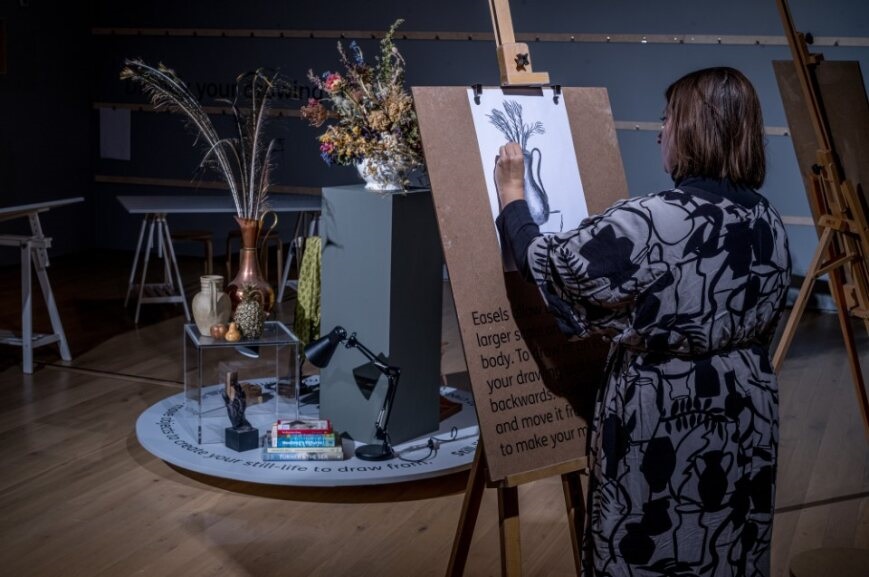
As part of the Season of Drawing, Ugonna has developed and led York Art Gallery’s annual Teenage Art School programme. Participants created work guided by their own experiences and interests, using a broad interpretation of drawing that aligns with Ugonna’s own practice in an exploration of the relationship between printmaking and drawing.
The installation of their works alongside Ugonna’s commission offers visitors the chance to reflect on the vast creative and interpretive potential of drawing.
With that in mind, a range of drop-in sessions and bookable events will run in the specially created Drawing Studio, where visitors can have a go at different types of drawing. Becky Gee, York Art Gallery’s curator of fine art, says: “The Season of Drawing is a dynamic series of exhibitions and events that we hope will inspire visitors to think deeply about different aspects of drawing, and be inspired to try it for themselves.
“We are so grateful to have the opportunity to bring together so many different artists, from the famous and contemporary names of the British Museum to our own Teenage Art School participants.”
Among the Emerging Artists In Dialogue is Charmaine Watkiss, exhibiting her 2021 pencil, water-soluble graphite, watercolour and ink work Double Consciousness: Be Aware Of One’s Intentions, acquired by the British Museum with Art Fund and Rootstein Hopkins Foundation support.
Charmaine, who lives and works in London, completed her MA in Drawing at Wimbledon College of Art, 2018. Her work is concerned with what she calls “memory “, wherein she creates narratives primarily through research into the African Caribbean diaspora, then mapped onto female figures.
Charmaine depicts herself as a conduit to relay stories that speak of a collective experience; starting with an idea, then allowing intuition and a dialogue with the work to take over. Her practice addresses themes of ritual, tradition, ancestry, mythology and cosmology.

Since her first gallery solo show, The Seed Keepers, for Tiwani Contemporary Gallery, London, in 2021, she has been investigating the herbal healing traditions of Caribbean women; especially those of her mother’s generation, connecting those traditions through colonisation back to their roots in Africa.
In 2022, Charmaine undertook a six-week residency in southwest France at Launchpad LAB that enabled her to explore nature and ecology in a more focussed way, and to combine drawing with making sculptural forms.
On her return, she was selected as a commissioned artist for the 12th edition of the Liverpool Biennial 2023. This allowed her to develop her practice further by creating an installation that consisted of life-sized drawings and sculpture, embodying a healing frequency in response to Liverpool’s troubled historical past.
Charmaine’s first institutional solo show, The Wisdom Tree, ran at Leeds Art Gallery from May to October last year, combining her signature large-scale drawings with more private artworks and notebooks in works that fused her interests in herbalism, alchemy and history and drew on her research into the medicinal and physical capabilities of plants.
Drawing Attention: Emerging Artists In Dialogue runs at York Art Gallery, launching the Season of Drawing, until January 28 2024. The season is backed by the Little Greene Paint Company.
To find out more about the exhibition, the Season of Drawing events programme and how to book tickets (£7, concessions available) at www.yorkartgallery.org.uk.
The full list of emerging artists in the Drawing Attention exhibition
EMII Alrai (born 1993); Catherine Anyango Grünewald (b.1982); Josephine Baker (b.1990); Miriam de Búrca (b.1972); Somaya Critchlow (b.1993); Jake Grewal (b.1994); David Haines (b.1969); Rosie Hastings & Hannah Quinlan (b.1991); Mary Herbert (b.1988); Jessie Makinson (b.1985); Sam Metz, Jade Montserrat (b.1981); Ro Robertson (b. 1984); Sin Wai Kin (b.1991), and Charmaine Watkiss (b.1964).

